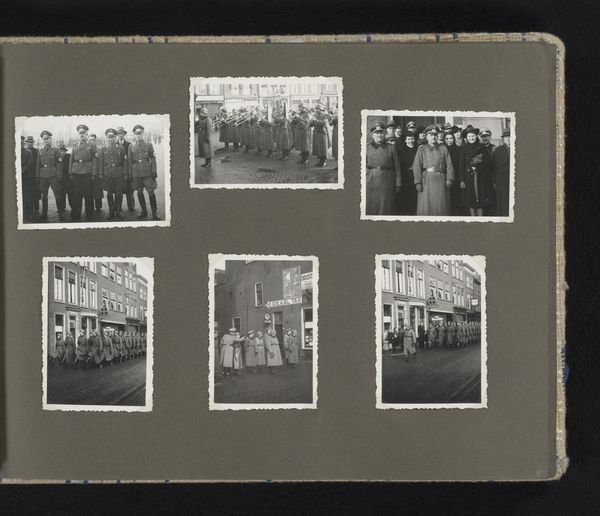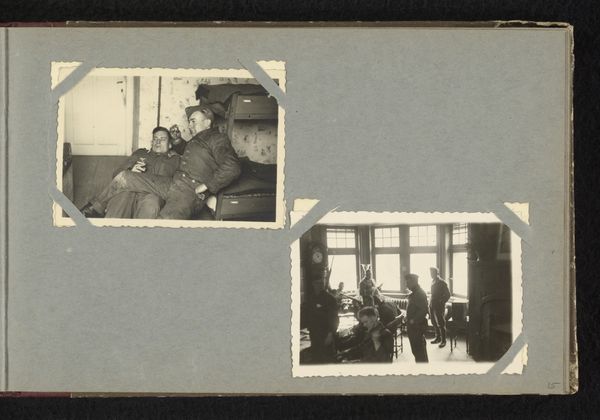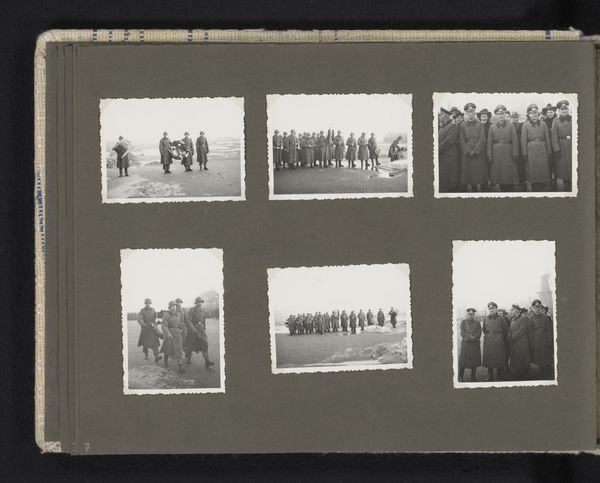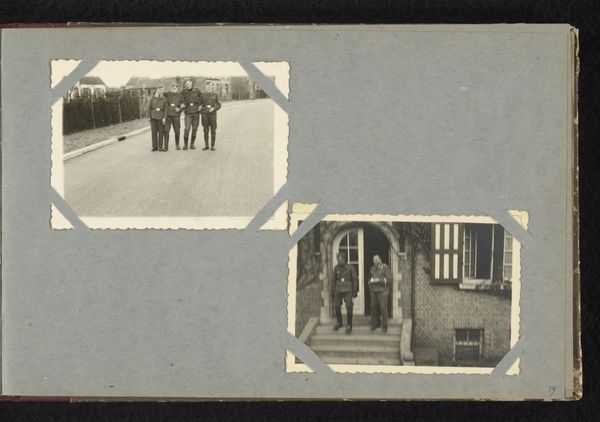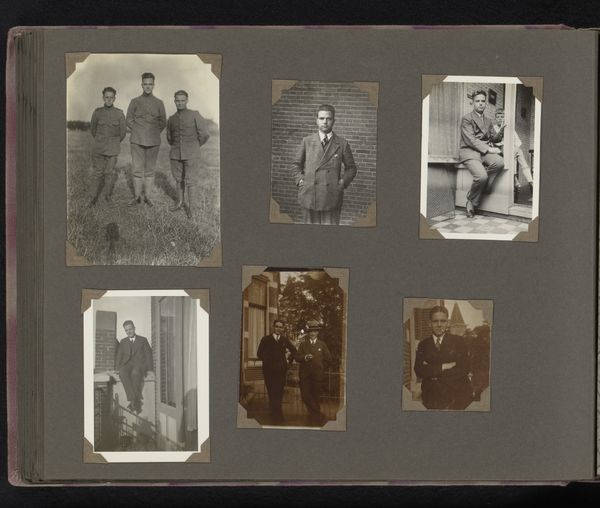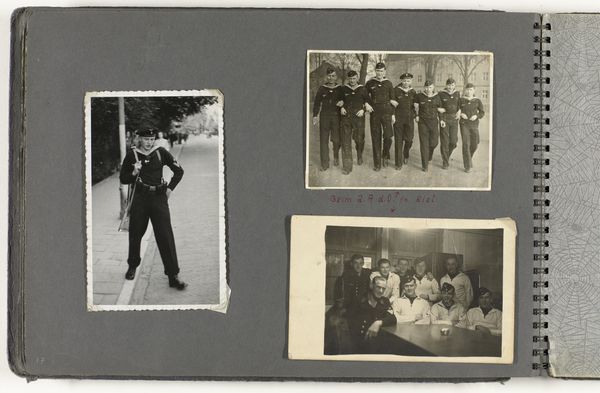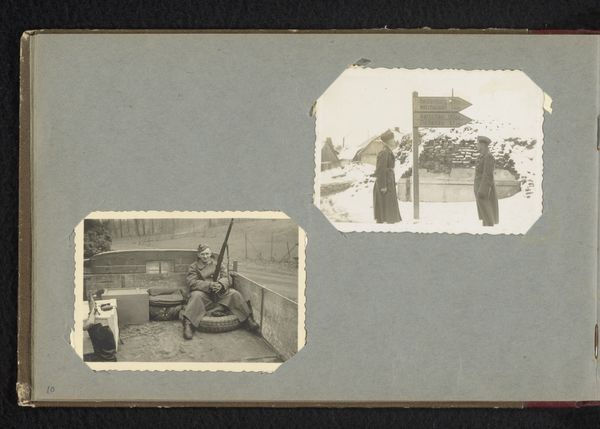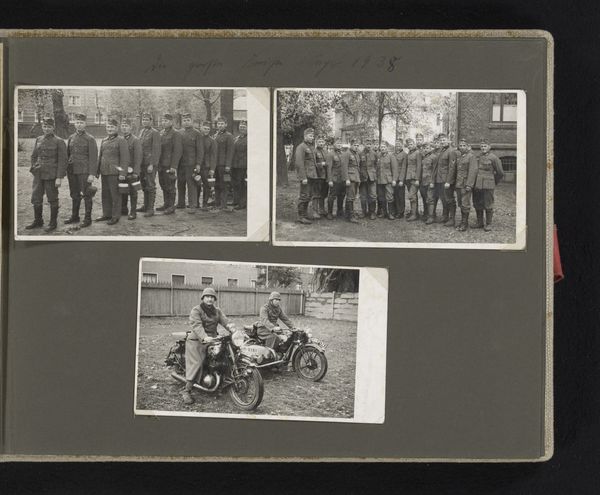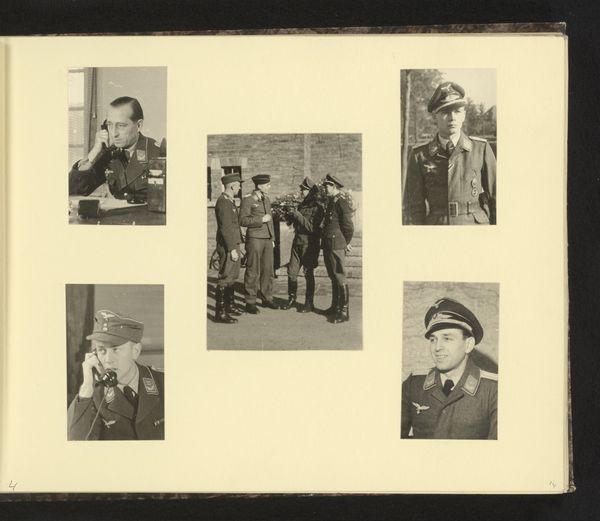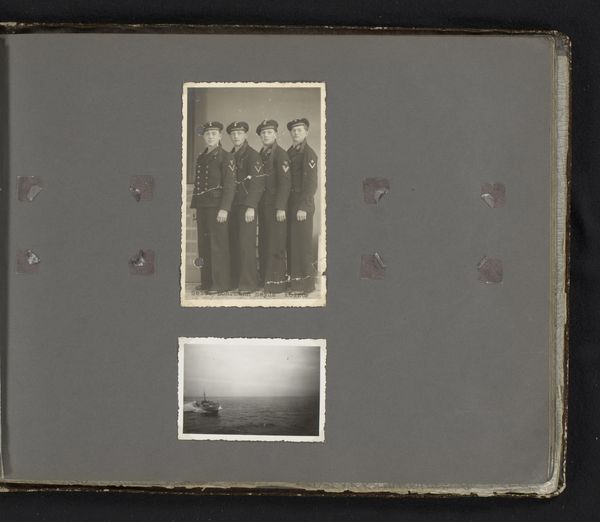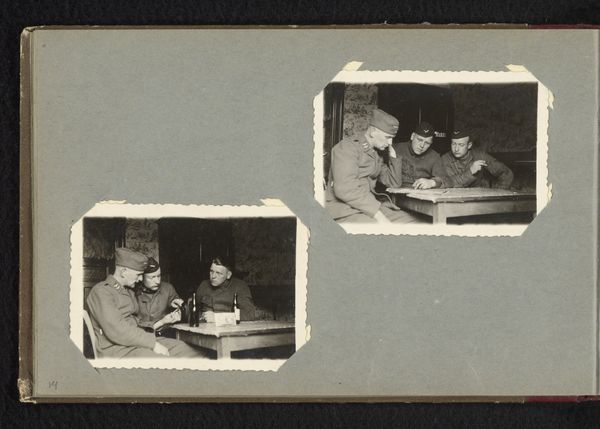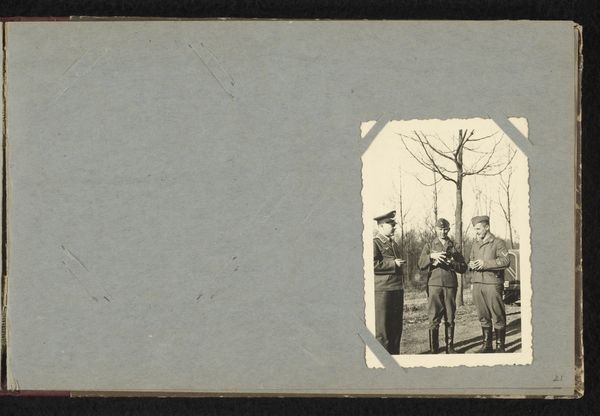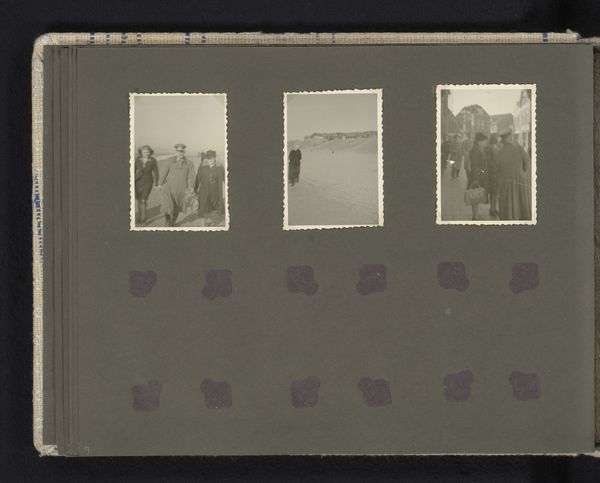
photography, gelatin-silver-print
#
still-life
#
reduced colour palette
#
muted colour palette
#
photography
#
historical fashion
#
gelatin-silver-print
#
genre-painting
#
realism
Dimensions: height 60 mm, width 87 mm, height 135 mm, width 200 mm
Copyright: Rijks Museum: Open Domain
Editor: Here we have “Duitse militairen met glazen bier,” or “German Soldiers with Glasses of Beer,” a gelatin-silver print from between 1940 and 1945 by an anonymous photographer, housed here at the Rijksmuseum. It feels oddly... intimate, despite the uniforms. What catches your eye when you look at this, especially considering the context? Curator: Initially, the composition strikes me. The photograph is organized into two distinct, almost vignette-like groupings, set against a muted background. The use of the gelatin-silver print enhances the tonal range, producing subtle gradations within a reduced colour palette. Observe how the eye moves across these two separate groupings – each self-contained and seemingly candid. Editor: Right, they do feel very separate. The composition, with these bordered snapshots on a neutral page, feels self-contained, but what about the realism? It seems contradictory when applied to propaganda. Curator: Indeed. The ‘realism’ isn't necessarily aligned with truth but rather in the stylistic representation. Focus on how the interplay between light and shadow shapes the forms of the soldiers and their surroundings. Does this particular manipulation, with its carefully orchestrated informality, serve to normalize or sanitize the image of the soldiers, or create a sense of remove? Editor: I see what you mean. The tonal range is limited but deliberate. The informality masks the... intentionality, perhaps? Curator: Precisely. It raises intriguing questions about the manipulation of imagery and how perceived 'realism' can serve specific agendas. The juxtaposition between seemingly ordinary soldiers in everyday situations against the backdrop of war provides fertile ground for exploration of the visual language employed during this period. Editor: That's a perspective I hadn't fully considered. It's unsettling to think how much the framing influences the reading. Curator: Agreed. Even in seemingly simple compositions, visual language carries profound implications.
Comments
No comments
Be the first to comment and join the conversation on the ultimate creative platform.
